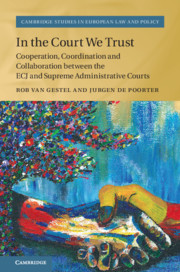This Article represents the first comprehensive study of the EU query process, a form of flexible extra-judicial cooperation between the European Ombudsman and the national ombud offices on the interpretation and application of EU law across member states. The way this cooperation is constructed brings imminently to mind the preliminary reference procedure: A national office submits a query within the scope of EU law to the European Ombudsman who, after consultation with the Commission—in the vast majority of cases—provides a reply. Upon closer examination, however, this Article illustrates key differences between the two procedures, while pointing out the added value of the EU query procedure compared to the preliminary reference. More specifically, while the interpretation that is provided is not authoritative or legally binding (among other differences), thanks to the flexibility of this instrument, interpretative guidance is provided at an early stage in case a problem in the interpretation and application of EU law arises, and thus litigation may be avoided. Furthermore, the EU query procedure serves as a reliable source of information for both the European and the national sides. However, this Article also identifies a number of challenges in relation to the transparency of the scheme, its effective functioning, as well as its interplay with other instruments, such as the infringement procedure.
